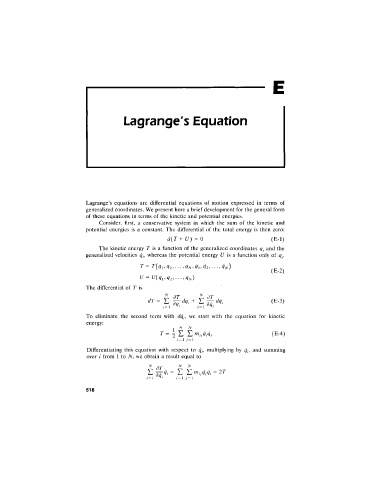Page 531 - Thomson, William Tyrrell-Theory of Vibration with Applications-Taylor _ Francis (2010)
P. 531
Lagrange's Equation
Lagrange’s equations are differential equations of motion expressed in terms of
generalized coordinates. W e present here a brief development for the general form
of these equations in terms of the kinetic and potential energies.
Consider, first, a conservative system in which the sum of the kinetic and
potential energies is a constant. The differential of the total energy is then zero:
d { T ^ = 0 (E -1)
The kinetic energy T is a function of the generalized coordinates and the
generalized velocities whereas the potential energy i/ is a function only of q^.
(E -2 )
The differential of T is
dT = E 3^/^. + J: dq. (E -3 )
i = \ i = \ ^ '
To elim inate the second term with dq^, we start with the equation for kinetic
energy:
N N
1
T = 2 ^ . H (E -4 )
, = i y = i
Differentiating this equation with respect to q-, m ultiplying by q^, and sum m ing
over i from 1 to N , we obtain a result equal to
dT N N
E ^<7, = E E = 2T
i ^ l i = \ j ^ \
518

